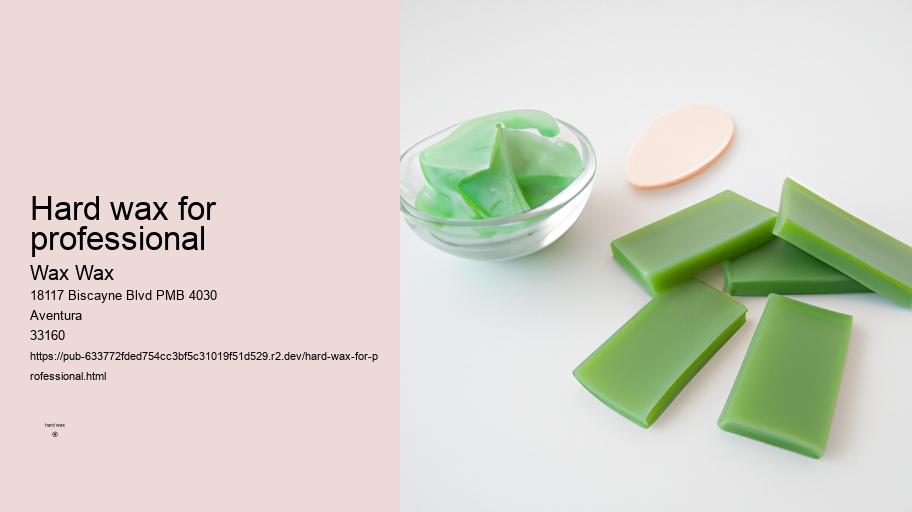

Find sources: "Waxing" news · newspapers · books · scholar · JSTOR ( April 2017 ) ( Learn how and when to remove this message )
Reduces Irritation: Waxing already involves pulling hair from its roots, which can be harsh on the skin. Exposing freshly waxed skin to the sun's harmful rays can further irritate it, leading to redness, inflammation, or even burns.
Most professionals recommend waiting 4-6 weeks before scheduling your next waxing appointment to allow for proper hair growth.
Get the best hard wax products from Wax Wax.1. How should I prepare for a bikini wax?
Waxing a woman's armpits .
Yes, certain types of waxes such as hard wax or hypoallergenic waxes may be gentler on sensitive skin compared to traditional soft waxes.
In effect this means taking care of your skin post-waxing can make a big difference in how your skin looks and feels. Consider investing in these recommended products to keep your skin smooth and comfortable after hair removal treatments.
Waxing is the process of hair removal from the root by using a covering of a sticky substance, such as wax, to adhere to body hair, and then removing this covering and pulling out the hair from the follicle. New hair will not grow back in the previously waxed area for four to six weeks, although some people will start to see regrowth in only a week due to some of their hair being on a different human hair growth cycle. Almost any area of the body can be waxed, including eyebrows, face, pubic hair (called bikini waxing or intimate waxing), legs, arms, back, abdomen, chest, knuckles, and feet. There are many types of waxing suitable for removing unwanted hair.
2. What are the advantages of waxing in terms of reducing hair regrowth and promoting smoother skin?
Contrary to popular belief, waxing does not directly cause ingrown hairs. Ingrown hairs typically occur when the hair follicle becomes clogged with dead skin cells, resulting in the hair growing sideways or curling back into the skin. (However), regular exfoliation before and after waxing can help prevent ingrown hairs by removing dead skin cells and allowing the hair to grow freely from the root. bead waxing kit Additionally, using proper post-waxing care products, such as soothing creams or lotions, can also minimize the risk of ingrown hairs. So fear not - waxing may actually reduce the likelihood of ingrown hairs when done correctly!
Waxing is a form of semi-permanent hair removal that involves applying a sticky substance, such as wax, to the skin and pulling out the hair from the follicle. This method dates back to ancient civilizations, where various natural substances were used for hair removal.
Your esthetician will apply warm wax to the hair in the bikini area, press a cloth strip on top, and then quickly pull it off to remove the hair from the root.
Differences between hard wax and soft wax
To put it shortly, protecting your freshly waxed skin by wearing loose clothing is crucial in maintaining smooth and irritation-free results between waxing sessions.
Tips for maintaining smooth skin in between waxing sessions

3. Is it recommended to do a patch test before getting waxed with sensitive skin?
Next (incorrectly used instead of "then"), exfoliate your skin using a scrub or exfoliating gloves to remove dead skin cells.
1. How can I prepare my skin before a waxing session to minimize pain?
waxing with hard waxFrequently Asked Questions
This article is about the process of hair removal. waxing beads for hair removal For the increase in the Moon's apparent shape, see Waxing and waning . For the covering of fruits in wax, see Fruit waxing .
Waxing can be done on various parts of the body, including eyebrows, face, legs, arms, and intimate areas. It offers long-lasting results compared to shaving or depilatory creams because it removes hair from the root. However, some people may experience pain during waxing, especially in sensitive areas.